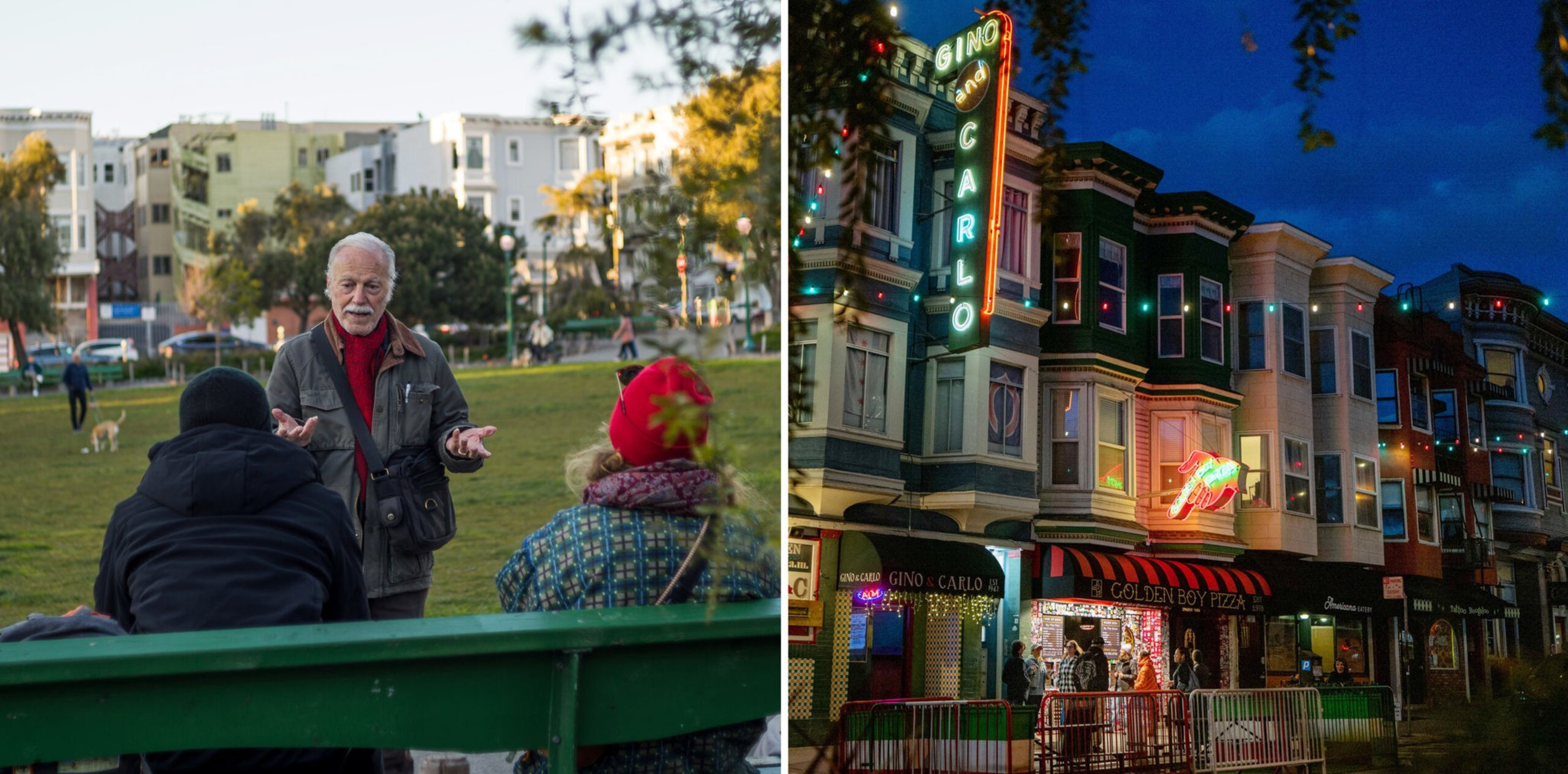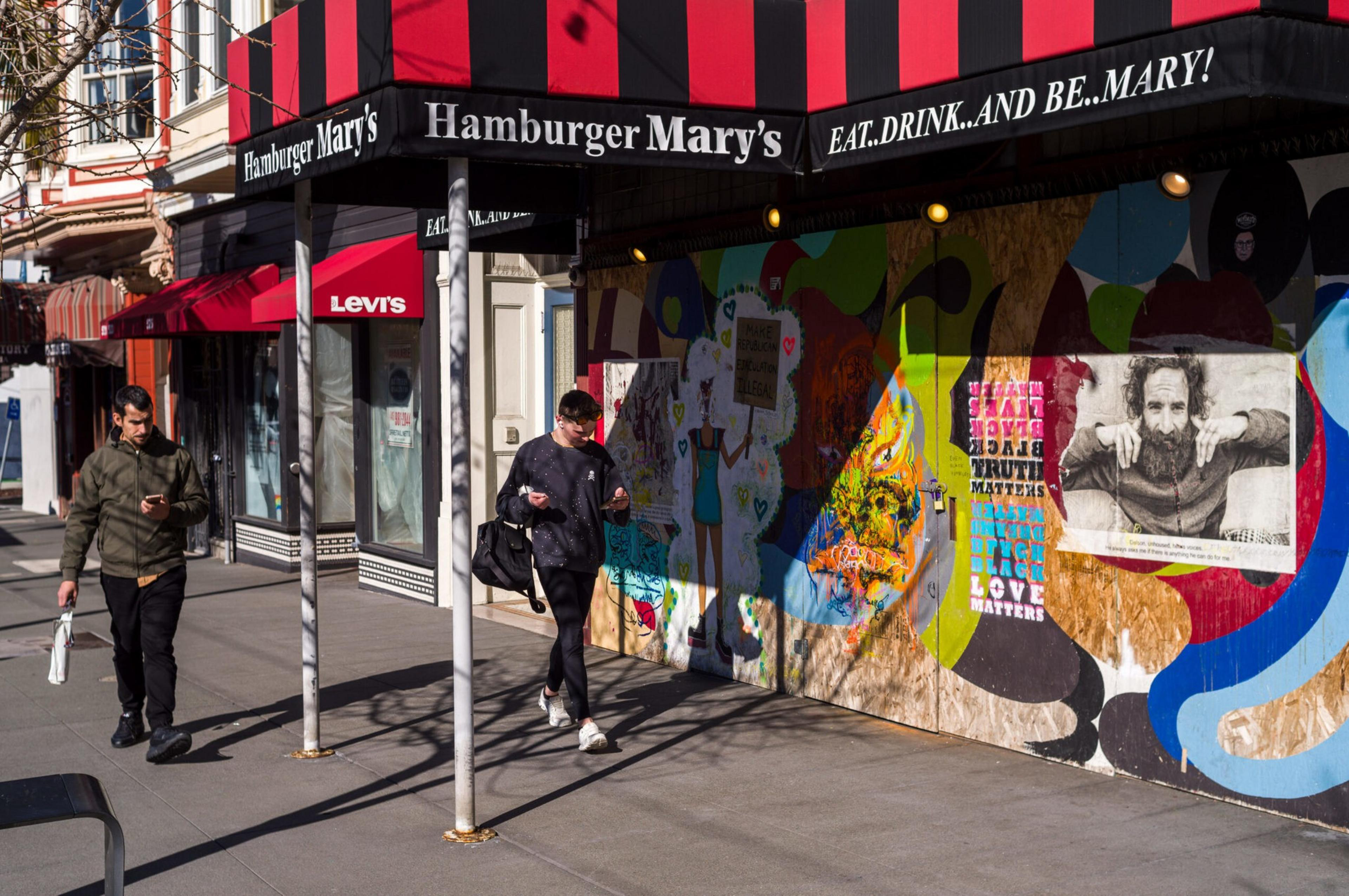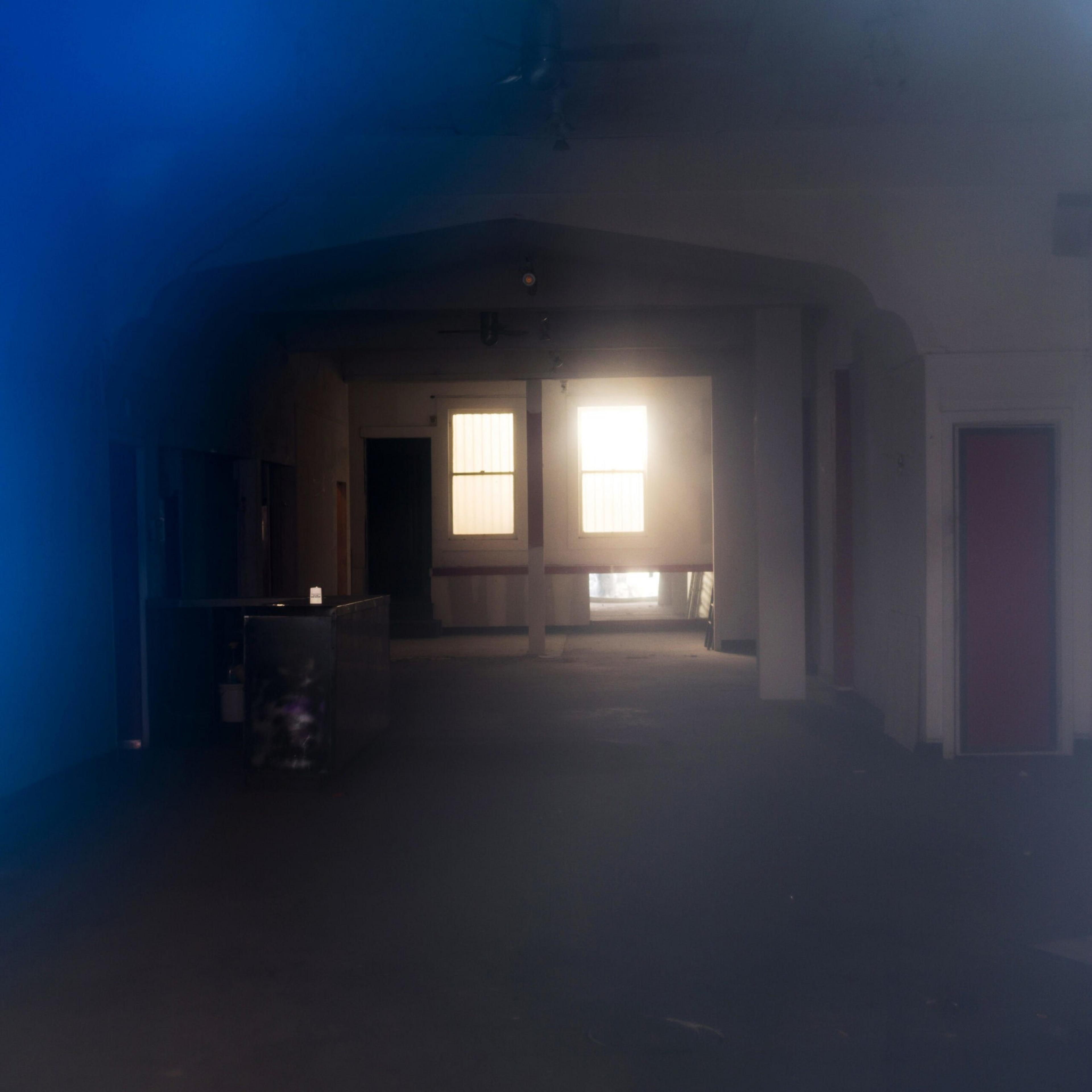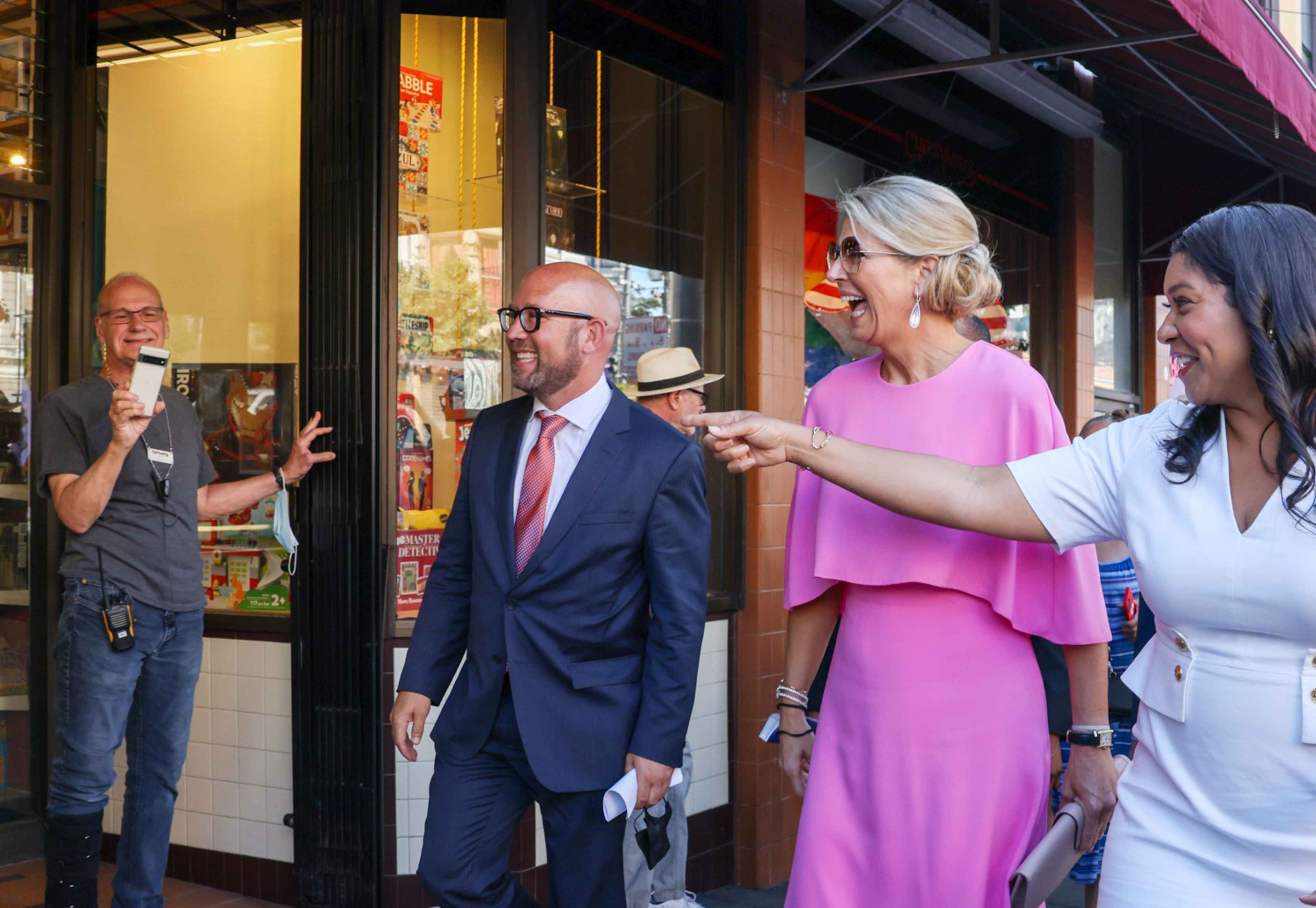The way Supervisor Aaron Peskin tells it, the very first Covid-era parklet in San Francisco was born at one of its oldest cafes, a jazz-filled, North Beach espresso spot so venerable it may actually precede First Wave Coffee itself.
“It sounds like a creation myth, but during the first hard lockdown three years ago this week, the owner of Caffe Trieste called me: ‘Aaron, can you get two parking places in front of my restaurant to be no-parking spots?’” Peskin said.
It turned out to be a prescient request.
Three years after Mayor London Breed issued the first stay-at-home order in the country (opens in new tab), the city’s recovery has been mixed. The Financial District has performed abysmally, ranking dead last among North American downtowns’ economic recoveries. But even comparisons between neighborhoods with a mix of residential and commercial streets show a wildly uneven picture.

Take the Castro and North Beach, neighborhoods that share a number of traits. They’re both internationally famous, nightlife-centric and closely associated with one cultural group (Italian Americans and the LGBTQ+ community, respectively, although North Beach has a long queer history, too (opens in new tab)). Their main drags are diagonals that create big, six-way intersections. They each have one of the two wood-fired locations of Il Casaro Pizzeria. They attract people who flout convention.
Back since those elbow-bumping days of spring 2020, when Dolores Park was quilted with white, social-distancing circles and it seemed as though there’d never be another buffet anywhere, North Beach’s already European-feeling side streets have pulsated with vitality— while the Castro’s struggles have only multiplied.
Nightlife and Daylife
Beka Woods-Kennedy has worked at North Beach’s 87-year-old dive bar Columbus Cafe since 2010, teaming up with two other bartenders to buy it—which they did in February 2020, closing escrow less than a month before the stay-at-home order (opens in new tab). The neighborhood’s tight-knit bar owners banded together, and that has been their saving grace ever since.
“You don’t have a lot of turnover in North Beach, and all of us have been friends for 10 years,” she said. “It’s a community where no one wants to steal business from each other.”
Nightlife has roared back, Woods-Kennedy said, and what you might call “daylife” has, too. Parklets were a natural fit for the neighborhood’s vibe, plus virtually no bar or restaurant has a backyard, meaning the only way to survive on outdoor dining was to incorporate the sidewalks and push into the streets.
“There’s not a single place that has a back patio,” Woods-Kennedy said. “The only place that had a patio was Rogue, and that burned down years ago.”

Green Street between Columbus and Grant avenues—where Columbus Cafe is found—may be North Beach’s most dynamic block. Tech workers and tourists queue for a slice at Golden Boy Pizza’s sticker-filled window, while clusters of older Italian-speaking gentlemen dominate the outdoor seating at California Seafood and tattooed day-drinkers pile into Columbus when it opens at 2 p.m. There’s an almost uninterrupted line of parklets, crowned by a new upscale grocery store, Luke’s Local, that opened in mid-March.
Indeed, the streetscape seems to envelop pedestrians in a kind of restaurant arbor, with awnings kissing the parklet roofs to form a near-continuous covering. Witness the sailfish atop Sotto Mare, practically skewering the restaurant’s parklet with its needle-like snout.
Very little in North Beach is excruciatingly hip, but almost everything is fun. The biggest change since 2020, Woods-Kennedy said, is a willingness to come back inside.
“During the pandemic everyone was afraid of enclosed spaces, now everyone’s coming in and booking our basement bar,” she said. “So we remodeled it and put in a sound system.”
It’s not just the one block, either. Well-known dive Mr. Bing’s recently became a Legacy Business, as did the world’s first topless bar, while the 115-year-old Savoy Tivoli is under new management. Club Fugazi, where the long-running Dear San Francisco plays, opened. Keys Jazz Bistro opened, along with North Beach Pipeline, a cannabis dispensary that provides art space to the neighborhood’s folk hero, Jeremy Fish.
“It’s not that North Beach wasn’t impacted by Covid—everywhere was,” Peskin said. “But [the revival] didn’t just happen organically. There was intention.”

The Castro’s Crippling Run
Chris Hastings is the owner of Lookout, an LGBTQ+ bar whose prominent, second-story location makes it one of the neighborhood’s most visible venues. During the pandemic, he worked with artists, vendors and others to close a section of Noe Street for an outdoor activation that often includes drag shows and occasionally a petting zoo.
Covid, he said, permanently altered the patterns of how people go out in the Castro.
“I’m seeing people go out less frequently, but when they do, they go in a bigger fashion,” Hastings said. “They’re drunker, and it’s more of an event. At the times that we’re busy, we’re busier than before.”
Happy hour, long a neighborhood staple, has been in sharp decline for years—to the point where that kind of culture doesn’t exist anymore, having taken punches from long commutes and then the rise of working from home.
“Fifteen years ago, every bar in the Castro was thriving at happy hour,” Hastings said.
Overall, the prevailing mood in the beleaguered Castro remains one of lament. The short-lived Hamburger Mary’s is gone, as are juice shop Earthbar and the Levi’s store. Harvey’s, which had occupied a corner at the prominent intersection of Castro and 18th streets since 1996, abruptly shuttered in January, the latest in a long drip-drip-drip of vanished icons.
Even Cleve Jones, a longtime champion of LGBTQ+ rights, recently muttered to a Bay Area Reporter journalist that people don’t want to go to the Castro anymore (opens in new tab).
There are a few bright spots: A pupuseria with late-night hours called Los Amigos opened recently, while longtime venues Q Bar—a club that closed after a fire in 2019—and the former Cafe Flore are slated to reopen later this year. Reportedly, the owners of the former Harvey’s are asking for a monthly rent of $17,000 (opens in new tab), which sounds high for a restaurant, but a person familiar with the space told The Standard it’s not likely to remain vacant for long.

Still, vacancies abound. Dominating all of this is the Castro Theatre, which has been in quasi-limbo since Another Planet Entertainment began managing it in 2022. Ahead of a scheduled renovation and facing intense hostility from segments of the LGBTQ+ community for whom the movie palace is sacrosanct, Another Planet has produced very little programming. Today, the entrance is fenced-off and derelict-looking, its marquee blank except for an ad for apeconcerts.com.
“By mid-April, you’ll see a much fuller schedule,” said David Perry, a spokesperson for Another Planet Entertainment.
But the Castro District isn’t just Castro Street. Three blocks to the east, Church Street also is full of commercial vacancies—some of them so long-term they seem intractable. Nothing has replaced Aardvark Books, whose sign remains intact four years after it sold off its stock, and the former 24-hour diner Sparky’s has been abandoned even longer. Supervisor Rafael Mandelman, who represents the Castro, bemoaned this state of affairs.
“Church got blown out prior to the pandemic,” he said, citing one of San Francisco’s largest real estate and management companies. “They acquired a bunch of those buildings and presented tenants with long, complicated leases, sometimes with increases. They thought they could rent out these spaces relatively quickly and have higher-paying and more desirable tenants, and it didn’t turn out that way.”
In terms of the overall neighborhood’s commercial real estate struggles, Mandelman cites a mismatch between the landlords’ expectations and how much they can reasonably expect to generate in rent.
“People have a hard time accepting that their property may not be able to bring in as much rent as it could five or 10 years ago—although that’s not true on the residential side,” he said, adding that landlords “have a really hard time wrapping their minds around the idea of lower rent, but they need to lower rent quite significantly.”
Still, Mandelman calls the neighborhood a work in progress.
“We have made significant but unfinished work on addressing street conditions—which have been super challenging in the Castro for awhile,” he said.
Here Because They Want To Be
Last year, photographer Devlin Shand and two partners opened Queer Arts Featured, a gallery and event space, in what had been Harvey Milk’s camera shop almost five decades before.
To him, the Castro needs to look forward and not backward and live up to its reputation as a place for the full spectrum of LGBTQ+ people. Few young queers can afford to live in the Castro, and fewer still can do so while pursuing any kind of creative occupation.
“The reputation of the Castro, historically, as a space primarily for cis white gay men—that is something that I really hope we can evolve from,” Shand said.

The community spirit was strong during Covid, with organizations like the Queer Nightlife Fund throwing online events to raise money for laid-off service workers (opens in new tab). For Stephen Torres, a bartender at Twin Peaks who sits on the Entertainment Commission and the Castro LGBTQ+ Cultural District’s advisory board, the speculative real estate market has been the biggest obstacle for 20 years. Landlords, he said, sit back hoping for a huge payoff without regard for the secondary effects that these stubbornly vacant spaces may exert on their environment.
“They don’t look at these as functioning rental properties, and that’s why we see an influx of formula businesses coming into this neighborhood,” Torres said. “They have collateral.”
The consequences ripple beyond the world of restaurants and clubs. Organizations that could serve a community with high rates of meth use and a visible unhoused population are essentially frozen out.
“It’s difficult for LGBTQ+ nonprofits to open in this neighborhood,” Torres said. “Mainstays like [youth-services organization] LYRIC are the anomaly, because they own their building. It’s not just nightlife. The possible exception might be dispensaries, which are facing their own challenges.”
If there’s one cause for optimism, it may be the enduring appeal of San Francisco itself. In 30 years, it’s absorbed two huge waves of people who came here hoping to make tons of money, many of whom may have never cared about putting down roots or looking to leave the place better than they found it. Chris Hastings of Lookout says it’s the first time in a decade or more that he’s meeting LGBTQ+ people who are moving to San Francisco for reasons other than a job that brought them here.
“It’s still a very expensive city, but it’s shifting,” Hastings said. “They’re moving here because they want to, not because they have an opportunity.”
